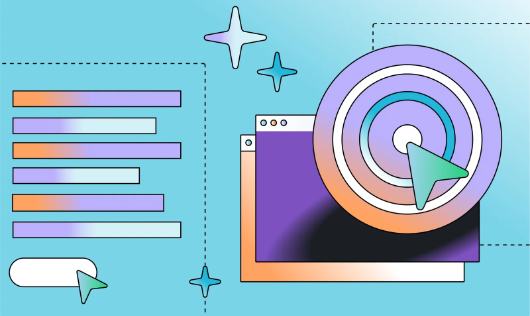Driving Growth: Exploring B2B Demand Generation for Business Success

No longer just an industry buzzword, demand generation has become a powerful tool for businesses of all sizes, allowing them to identify buyers more accurately and create tailored experiences that deliver the ROI they’ve always wanted.
In this post, we’ll explore B2B demand generation and its key principles so you can take your business to the next level.
What is B2B Demand Generation — and How Does it Benefit Businesses?
In its simplest form, B2B demand generation is the process of creating awareness and interest in your product or service among your target audience. It’s the foundation upon which your marketing and sales efforts are built. By engaging potential buyers and starting a conversation with them, demand generation helps to identify and nurture leads, turning them into customers (hopefully, for life).
The benefits of B2B demand generation are numerous. For one, it helps you to create a predictable, recurring revenue stream by building a pipeline of qualified leads. Demand generation also helps align your marketing and sales teams, who work together to drive revenue growth.
Last but not least, a good demand generation campaign empowers you to gather valuable data on your target audience, allowing you to refine your messaging, improve your targeting, and optimize your campaigns to drive better results over time.
Identifying the Right Target Audience For Your Product or Service
Finding the right audience for your product or service is, without a doubt, the most important part of any B2B demand generation strategy. Without knowing who your audience is or what they want, you’ll be fumbling around in the dark with your marketing efforts.
Start by doing some research — use tools like surveys, focus groups, and online research to gather data on your target audience’s needs, pain points, and behaviors. This will help you to create a more accurate persona and messaging that resonates with them.
You can also look at your existing customers and identify commonalities in their demographics, job titles, and buying behaviors. This can help you to identify patterns that you can replicate in your demand generation efforts.
Your target audience likely won’t stay stagnant. As you continue to gather data and execute your demand generation programs, refine your customer persona to reflect new information. This will help you to create more targeted and effective campaigns over time.
Key Strategies for Effective B2B Generation
Now that we understand the concept and benefits of B2B demand generation, let’s look at some key strategies for creating an effective demand generation program.
The first step in any demand generation program is to clearly define who your ideal customer is. This will help you to create messaging that speaks directly to their pain points and needs. Start by gathering data on your customer personas — demographic and firmographic information.
Once you’ve defined your target audience, you’ll want to focus your efforts on creating content that speaks directly to their needs and interests. This could be in the form of blog posts, whitepapers, infographics, webinars, or any other type of content that your audience finds valuable (more on this a bit later in this post).
The beauty of demand generation is that there is no one-size-fits-all approach. Experiment with different channels to see what works best for your audience. This could include email marketing, social media, SEO, paid advertising, and more.
Leveraging Content Marketing to Generate Interest in Your Business
Content marketing is a powerful tool to generate interest in your business. In most cases, it costs significantly less than traditional marketing while generating three times as many leads. But how exactly can you use content marketing to drive demand?
Start by creating educational and informative content that addresses your audience’s pain points. This can include blog posts, social media posts, e-books, whitepapers, and more. Share your content on various platforms and engage with your audience to build a relationship.
Be sure to incorporate targeted search engine optimization techniques to ensure your content ranks well on search engines and is easily discoverable by your target audience.
Taking Advantage of Automation in Your Demand Generation Plan
Automation can save you time and resources while improving the effectiveness of your demand generation plan. There are several different types of automation tools available that can help you streamline your marketing efforts and make sure that your messaging is personalized and targeted.
For example, marketing automation tools can help you nurture leads through a multi-step campaign that delivers targeted messages to potential customers at the right time. Email automation tools can help you send personalized and relevant emails to your subscribers, while social media automation tools can help you schedule your posts and ensure consistency in your messaging. You shouldn’t rely on these as the sole tools in your demand generation toolbox, but they can definitely help make things easier!
Measuring Success With Analytics and Data-Driven Insights
Measuring the success of your demand generation plan is integral to optimizing your efforts and driving growth. Analytics and data-driven insights can give you valuable information about your audience’s behavior, the effectiveness of your content and messaging, and the performance of your marketing campaigns.
Tools like Google Analytics can help you track website traffic, page views, bounce rates, and more, while email marketing tools can give you insights into open rates, click-through rates, and conversion rates. Use this information to identify areas that need improvement and make data-driven decisions to optimize your demand generation plan.
The Takeaway
B2B demand generation is a critical component of any marketing strategy. By creating awareness and interest in your product or service among your target audience, you can build a pipeline of qualified leads and drive predictable revenue growth.
Remember to keep refining your target audience over time and measuring your results so that you can optimize your campaigns for maximum impact. With these tips, you’re well on your way to driving growth and success for your business.




























